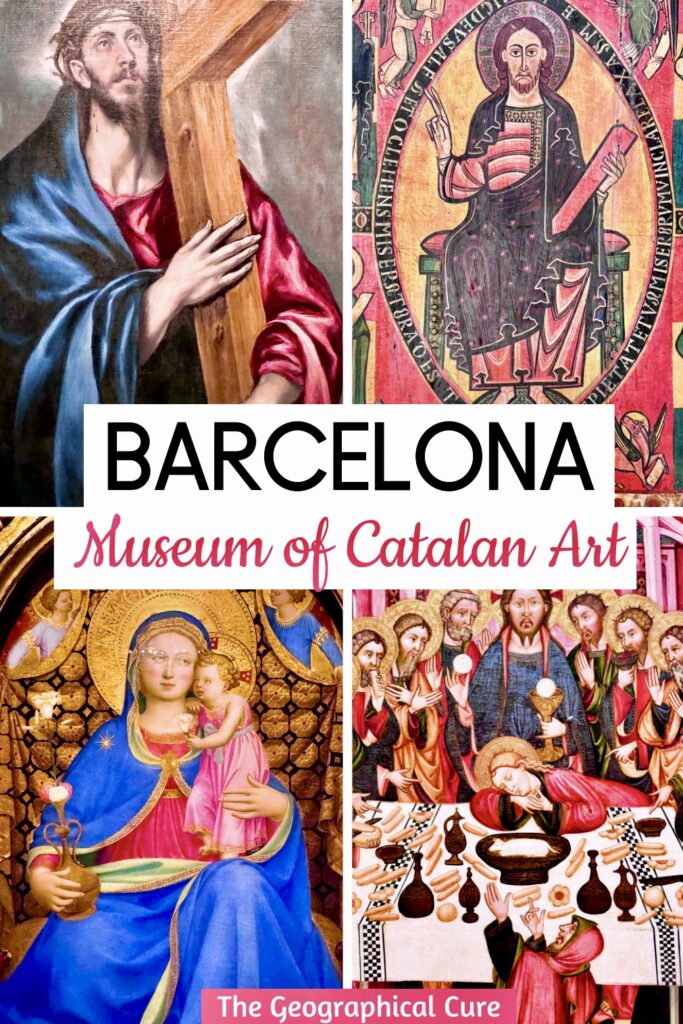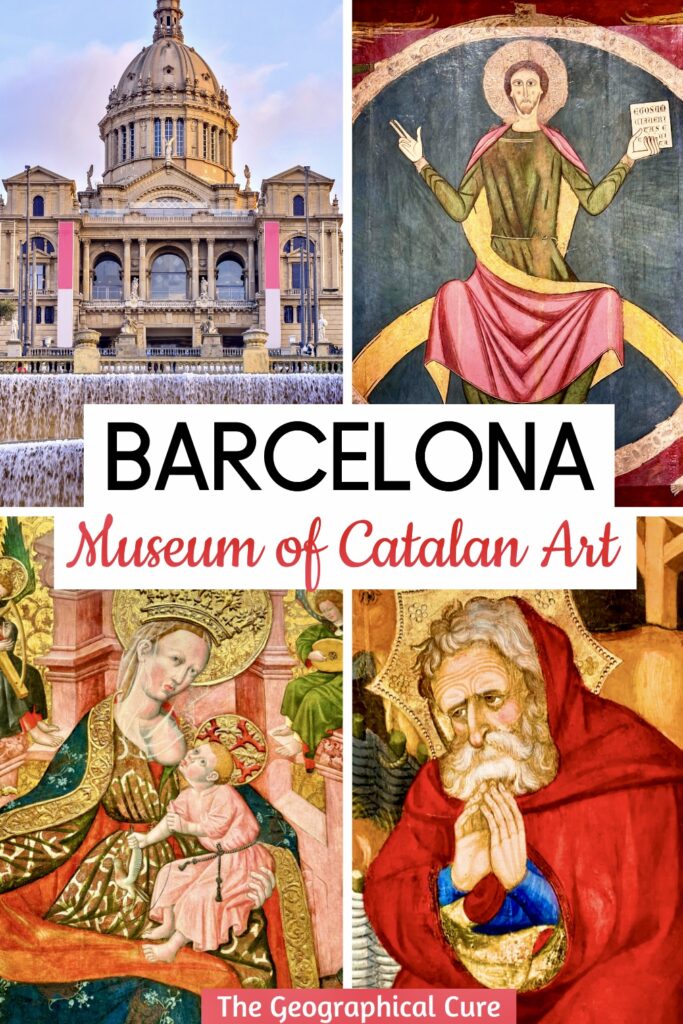The Museu Nacional d’Art de Catalunya (“MNAC”) is absolutely wonderful! It’s housed in a grandiose Neo-Baroque palace on Montjuic Hill designed by architects Eugenio Cendoya and Enric Catà.
The museum has the best art in Barcelona. You could easily spend several hours immersing yourself in its artistic and architectural marvels.
The museum’s mission is to showcase Catalan art from the 10th to the 20th centuries. The extensive collection encompasses a wide range from medieval to contemporary art.
The museum boasts an incredibly unique collection of Romanesque mural paintings, which have been meticulously collected from various historic sites. In. my opinion, this is the true highlight of MNAC.
Other highlights include masterpieces by renowned artists such as El Greco, Velazquez, Gaudi, Dali, Picasso, and Ramon Casas.
The museum is neatly divided into four parts, each with its own entrance:
- Romanesque
- Gothic & Renaissance
- Modern art
- Modern civil war
You’d think it would easy to visit. But each zone is chock full of art and a bit labyrinthian.
Quick Tips
- to get the museum, take the escalators near the metro station at Plaça Espanya
- in high season, purchase a skip the line ticket
- you’ll need your ticket to get into each area
- plan to spend at 2-3 hours here (it’s huge!)
- with less time, focus on the Romanesque and Thyssen collections
- the rooftop terrace offers amazing views
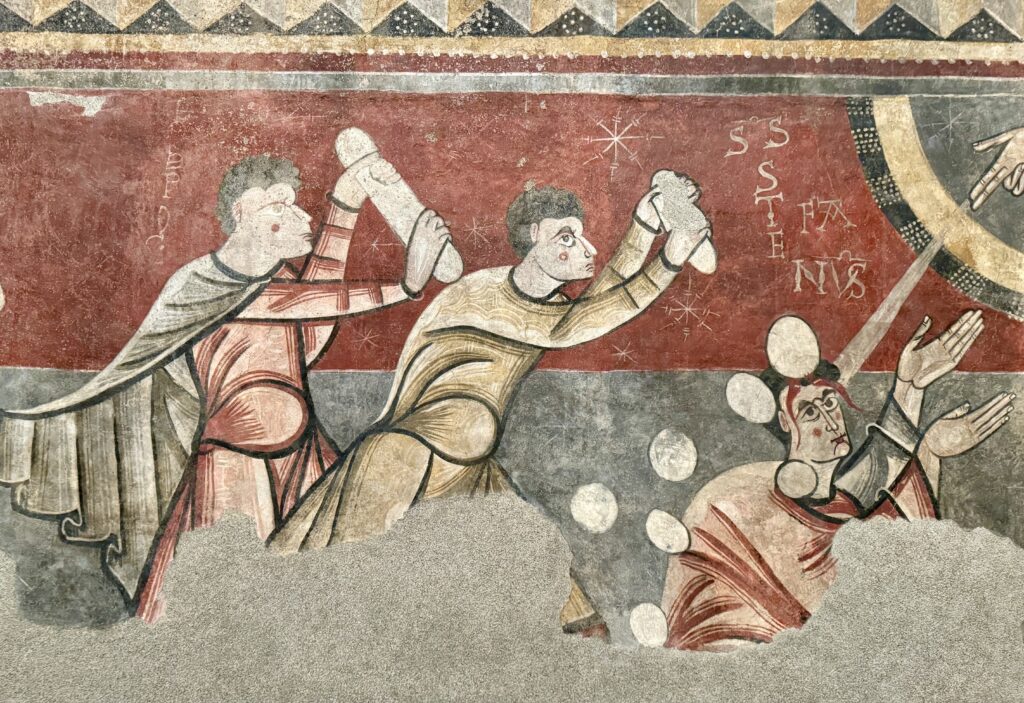
Guide To MNAC: What To See
Here are some of the must see highlights of the museum.
Romanesque Art
If you want to see the artworks in chronological order, start in the stunning Romanesque section, on your left as you enter. It’s known as the Prado of Romanesque Art.”
What is Romanesque art? It dates from the the 11th to the 13th century in medieval Europe.
Romanesque art often features bold colors, religious themes, and stylized Byzantine-like figures, conveying narrative scenes in a direct and powerful manner.
The artwork was primarily created to decorate and enhance the spiritual experience within churches, cathedrals, and monastic settings. And also to “educate” the masses.
The Romanesque artwork is divided into 21 “ambits” or rooms.
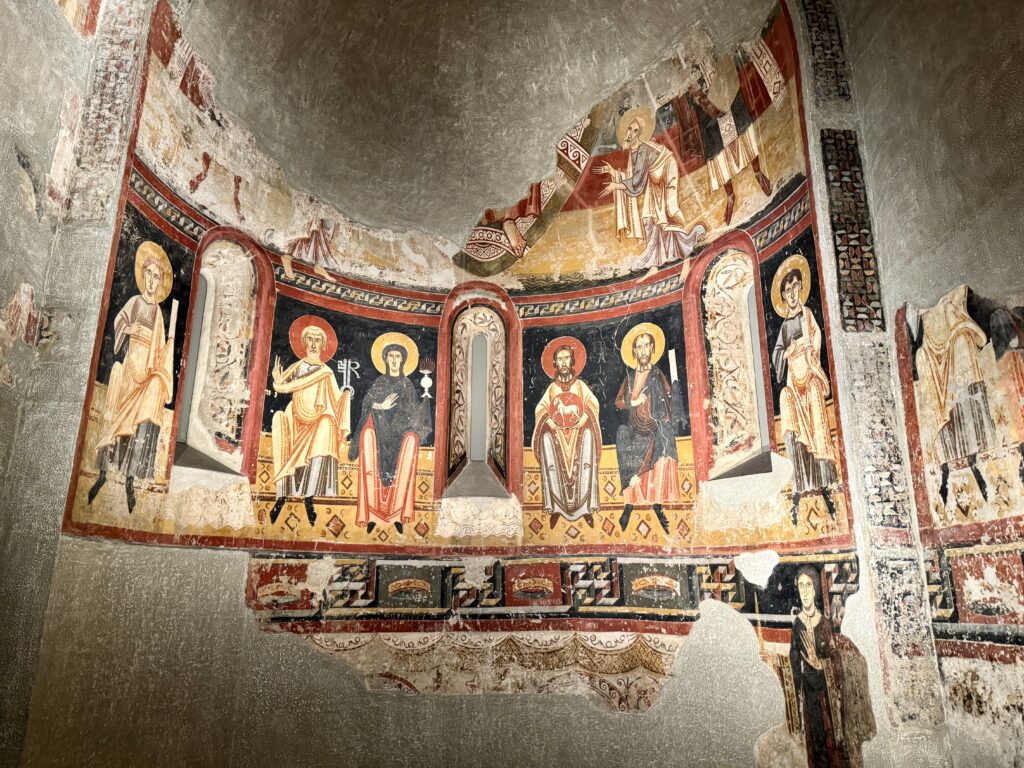
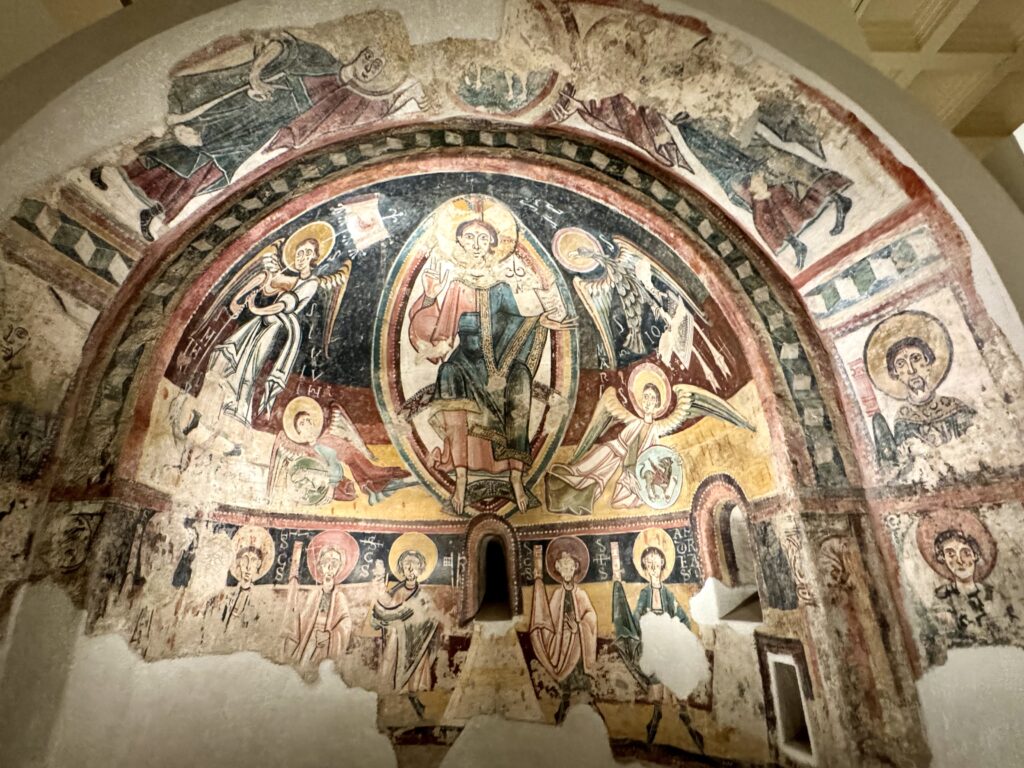
They house a treasure trove of frescos and artworks removed from churches in northern Catalonia to save them from dampness and decay. Many of them are in re-created church interiors.
The frescoes were carefully removed and reinstalled here using a unique method known as strappo. This technique involves applying an isolating agent to the original artwork and then delicately peeling off the pigment and transfering it onto a new canvas.
You can watch a 6 minute video about the process.
The MNAC presents these frescoes inside massive domes, creating authentic displays that will make your draw drop.
Room 2 has the liveliest frescos, painted in a literary style. You see the Stoning of St. Stephen, who’s comforted by a heavenly beam of light.
The finest frescos are in rooms 5 and 7. They were removed from two churches in the Pyrenees.
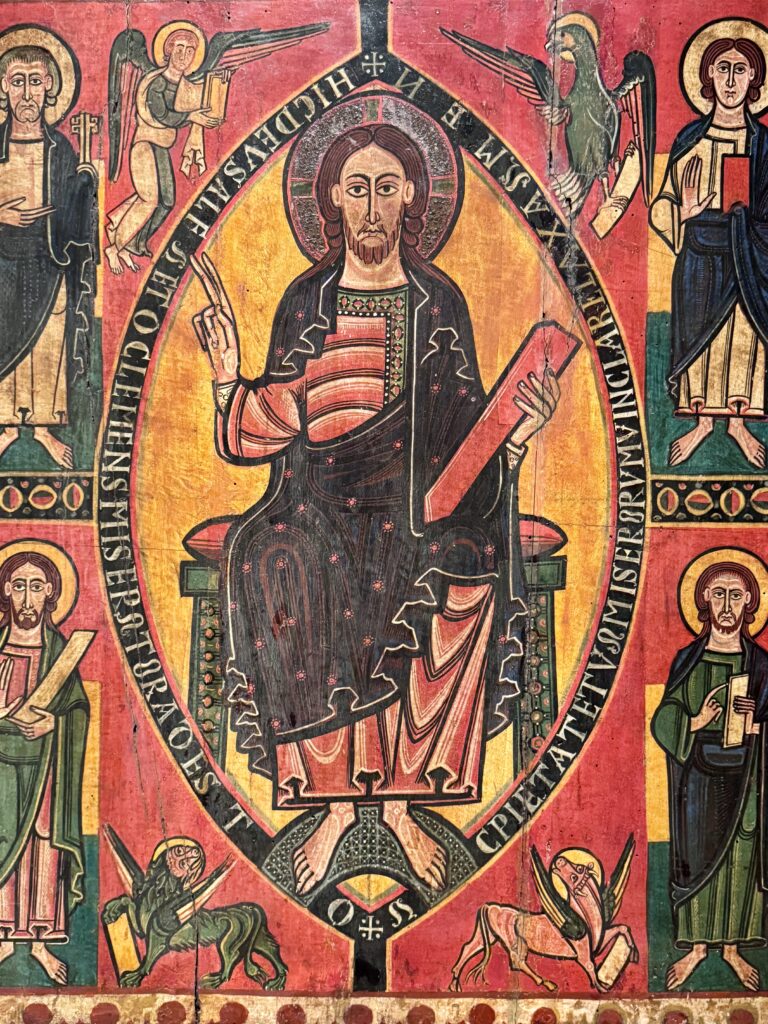
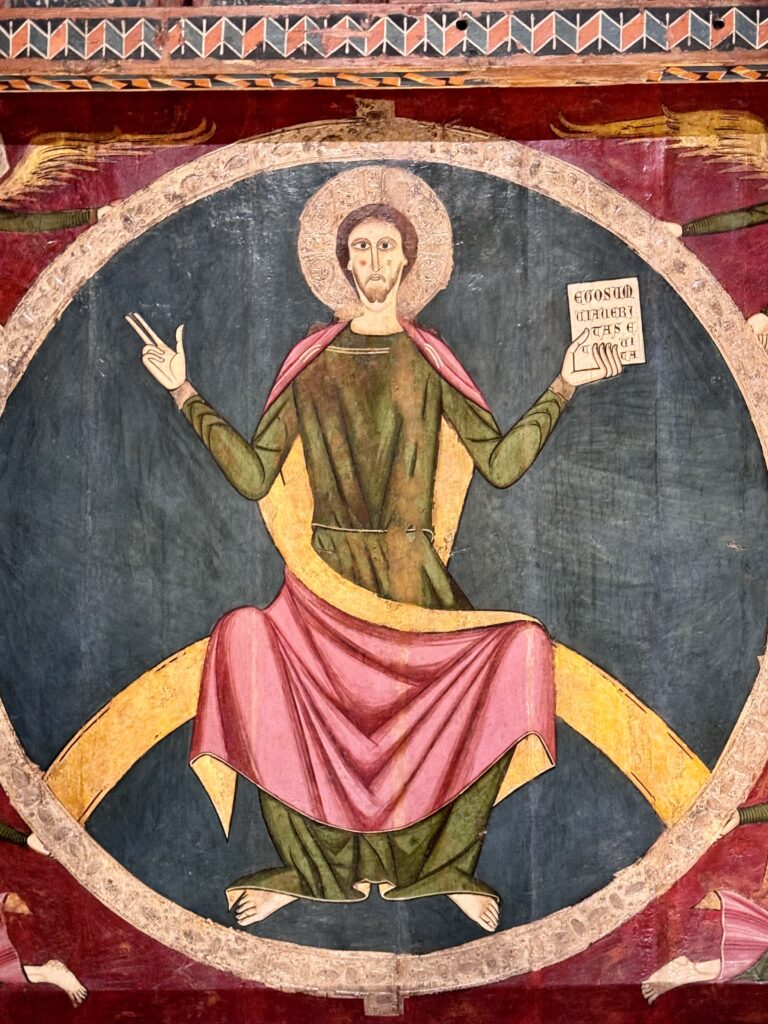
Room 5 contains an exquisite decoration once in a central apse, in dominating colors of turquoise, ocher, and dull brick red.
The most popular image of the medieval world, Christ sits on high on a throne, in majesty, in a cocoon-like halo. Unlike much Romanesque art, his eyes are expressive and engaging.
In room 7, Mary is the central figure. She’s in a typical pose with baby Christ on her lap.
Room 8 houses a rare 12th century painted wooden crucifix. Room 10 shows the rather nasty martyrdom of four saints.
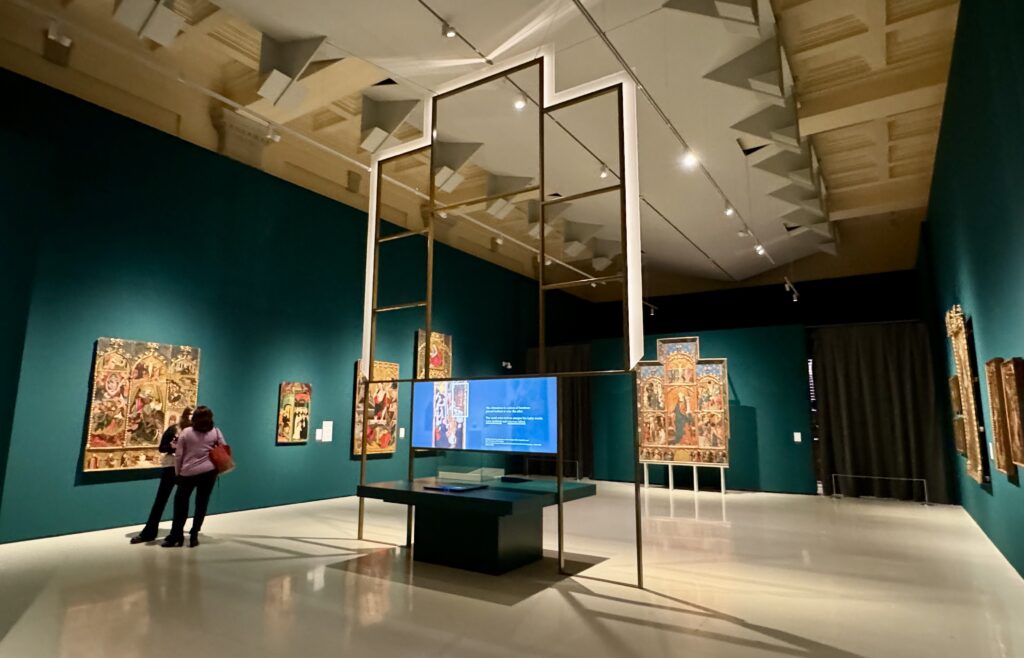
Gothic Art
When you’re done there, cross the hall to the wide ranging Gothic collection. It traces the development of Gothic painting in Spain from 1250 to 1500.
Italian painters hugely influenced Spanish painters, who embraced the “International Gothic” style.
Unlike the Romanesque murals, most of the artwork is paining on wood.
The two most outstanding Spanish masters were Bernat Martorelli and Jaume Huguet. Their works are on display in rooms 26, 32, and 34.
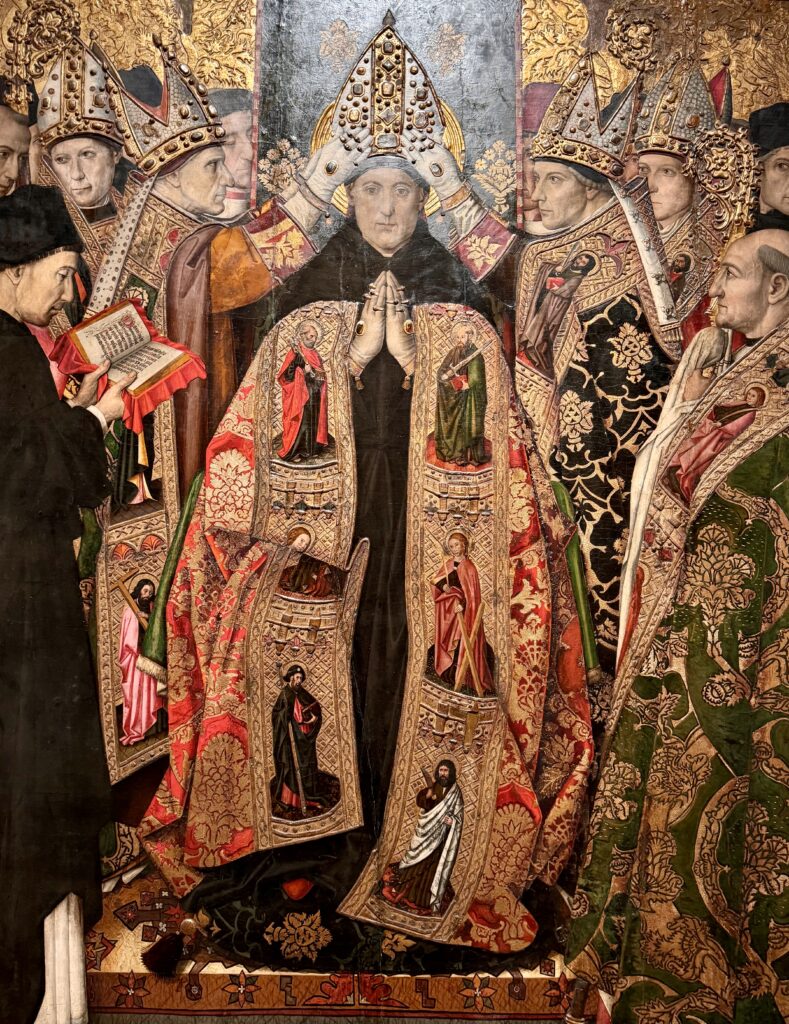
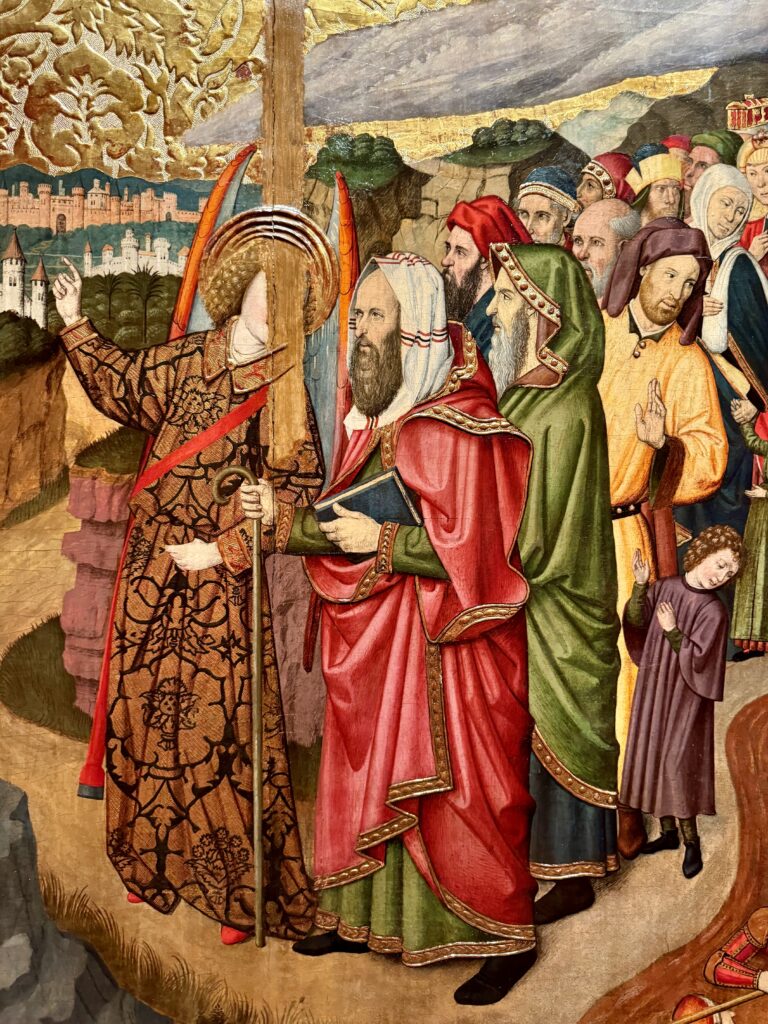
Huguet’s six paintings in room 26 were once part of a 40 foot tall altar. The theme was Saint Augustine.
The artist’s masterpiece is the Consecration scene. Augustine becomes a bishop and is crowned with the hat.
The bright colors and gold leaf details are very impressive. There’s also a Last Supper painting, where the artist makes a bold attempt at 3D images.
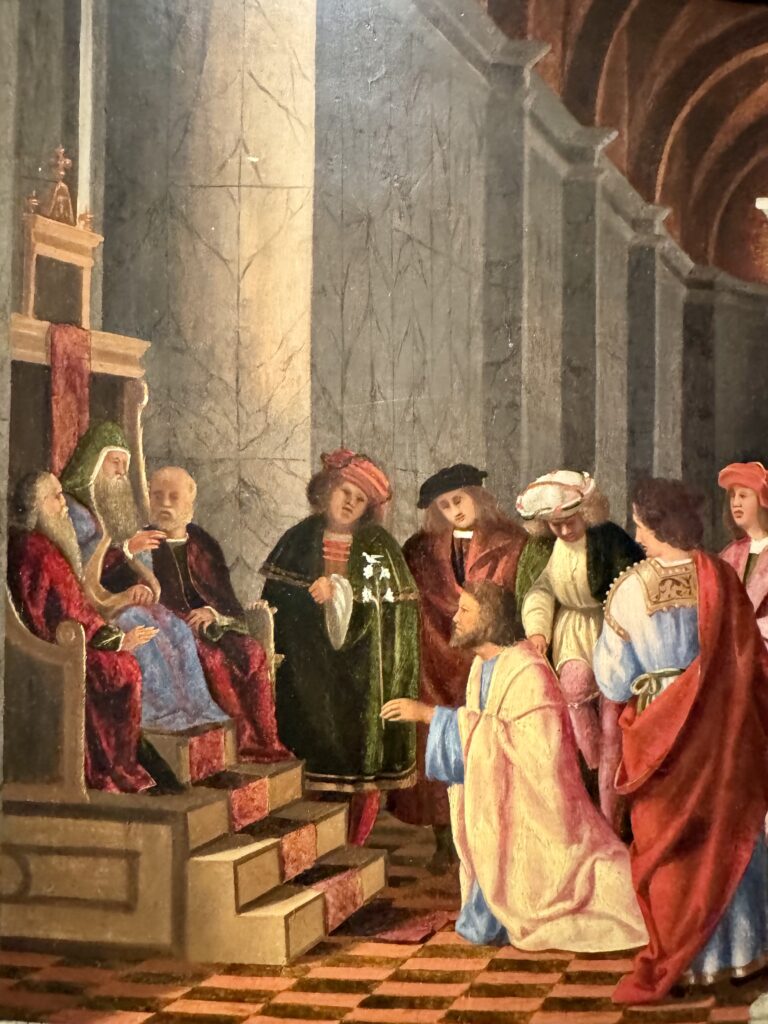
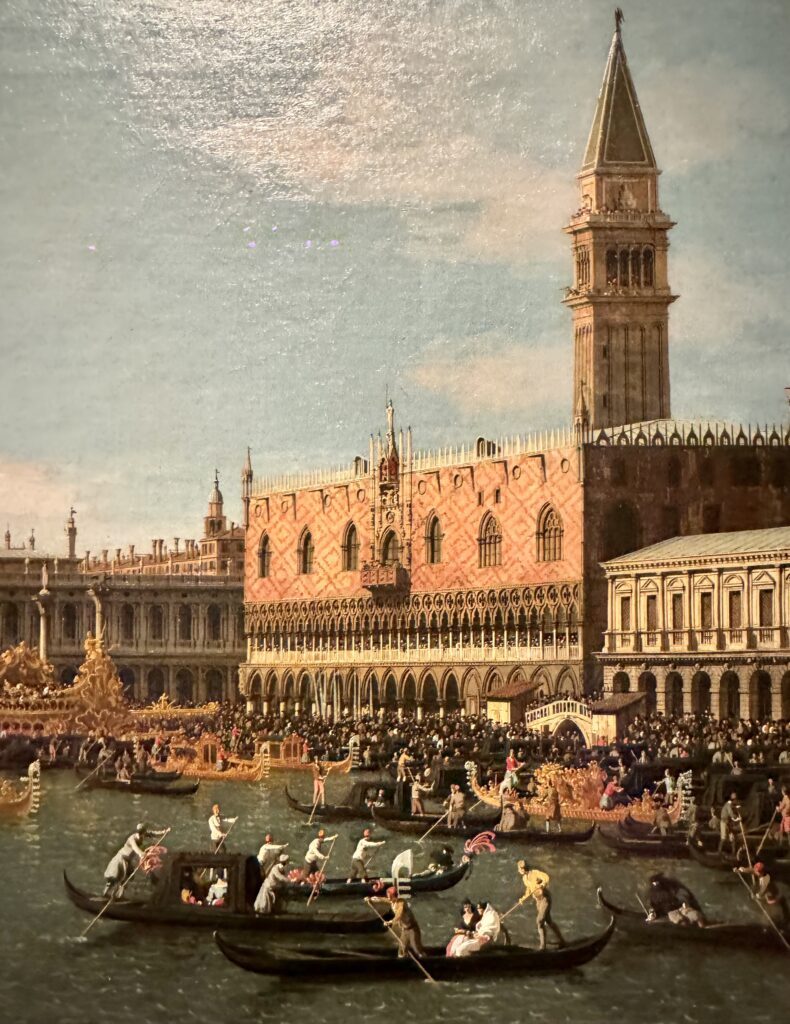
Renaissance
This section is notable for its rich collection of works from the 16th to the 18th centuries, encompassing a diverse range of artistic expressions.
The collection includes paintings, sculptures, and decorative arts from both Catalan artists and other prominent European artists of the period.
In Room 32, you’ll find El Greco’s Christ Carrying the Cross and Jose Ribera’s saints with wrinkled foreheads.
Room 45 contains the Cambo Bequest. It’s a private collection of works of the Italian Renaissance, Spanish Golden Age old masters, and Rococo works.
You’ll see pieces by Veronese, Titian, and Rubens.
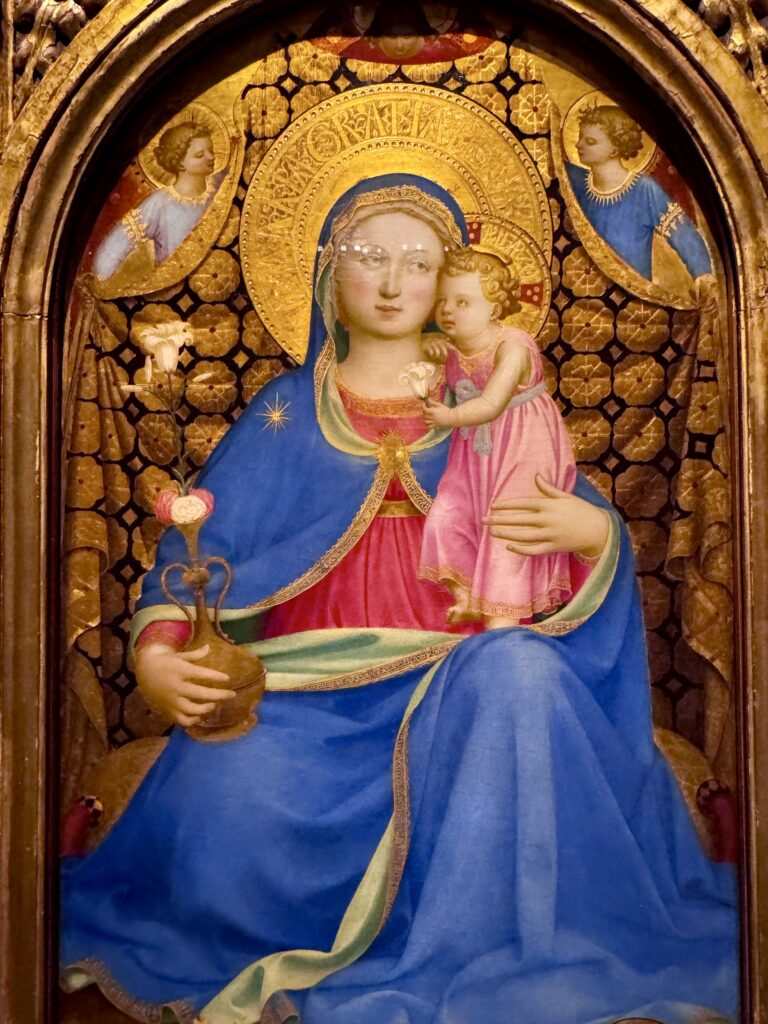
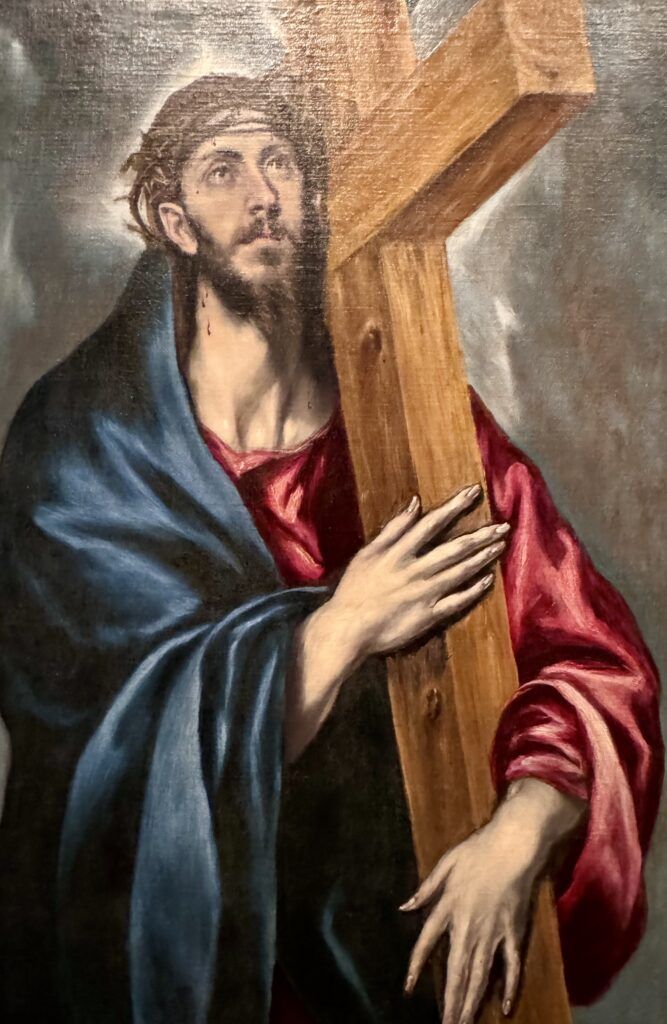
Rooms 47 and 48 contain part of the collection of the Thyssen-Bornemisza Museum. It was formerly housed in the Pedralbes Monastery.
You’ll find minor works by El Greco, Tintoretto, Lorenzo Lotto, Bassano, Fra Angelico, and Canaletto.
From there, you pass into the central hall. It’s a pretty space with frescoed ceilings, a cafe, and rest rooms in one corner.
You can head up the stairs to inspect the dome more carefully. After that, the next bunch of rooms are dedicated to Spanish masters like Ribera and Zubaran.
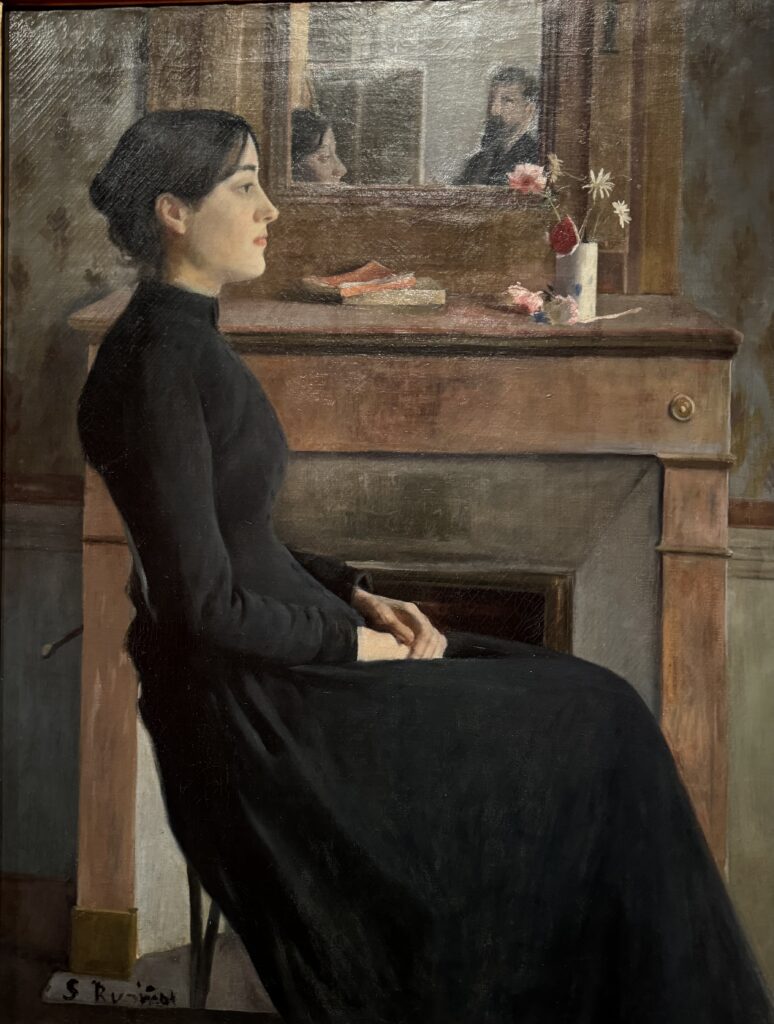
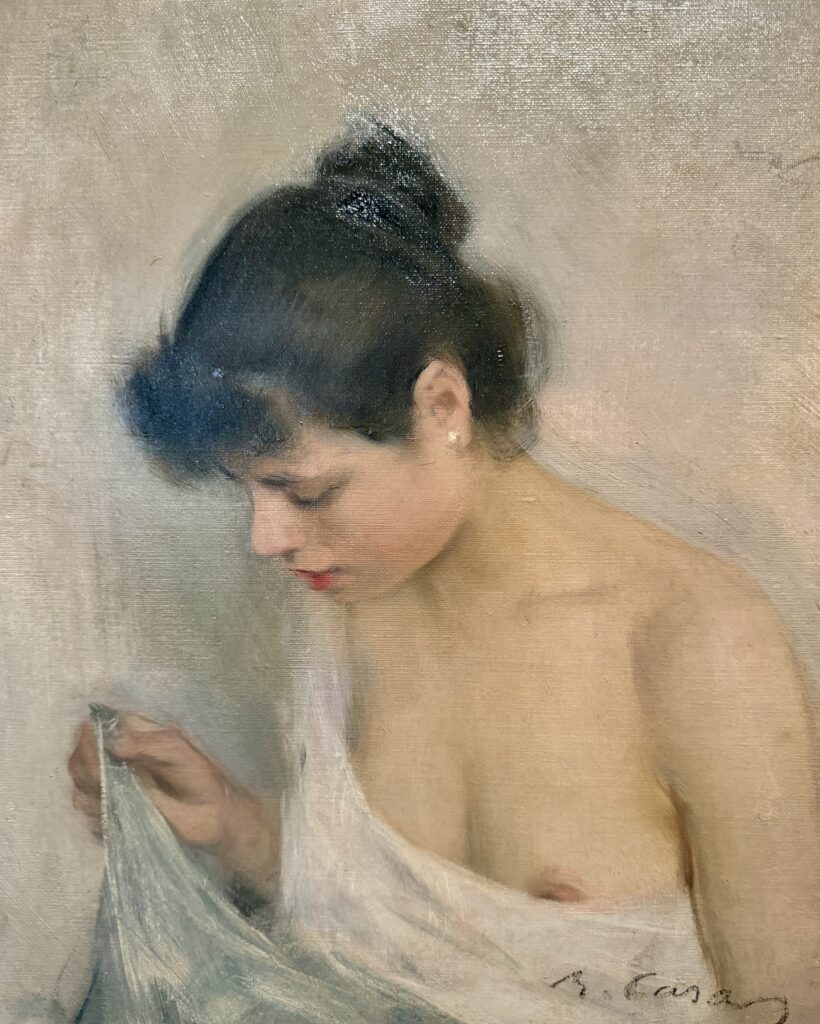
Modernism
The Modern art section takes you on a stroll through art from the 1800s to about 1950. It’a a bit like Paris’ Musee d’Orsay except with mostly Spanish artists.
You’ll find all the arts — painting, sculpture, decorative arts, drawings, photography, and prints.
Looks for the paintings by Santiago Rusinol and Ramon Casas, both of whom influenced Picasso.
Casas has some eye catching pieces that are similar to French artist Toulouse-Lautrec.
If there was one spot in Barcelona that epitomized modernity, it was the tavern Els Quatre Gats. Operating from 1897 to 1903, it became a hub for artists who had experienced Parisian life, including Casas, Rusiñol, and Utrillo.
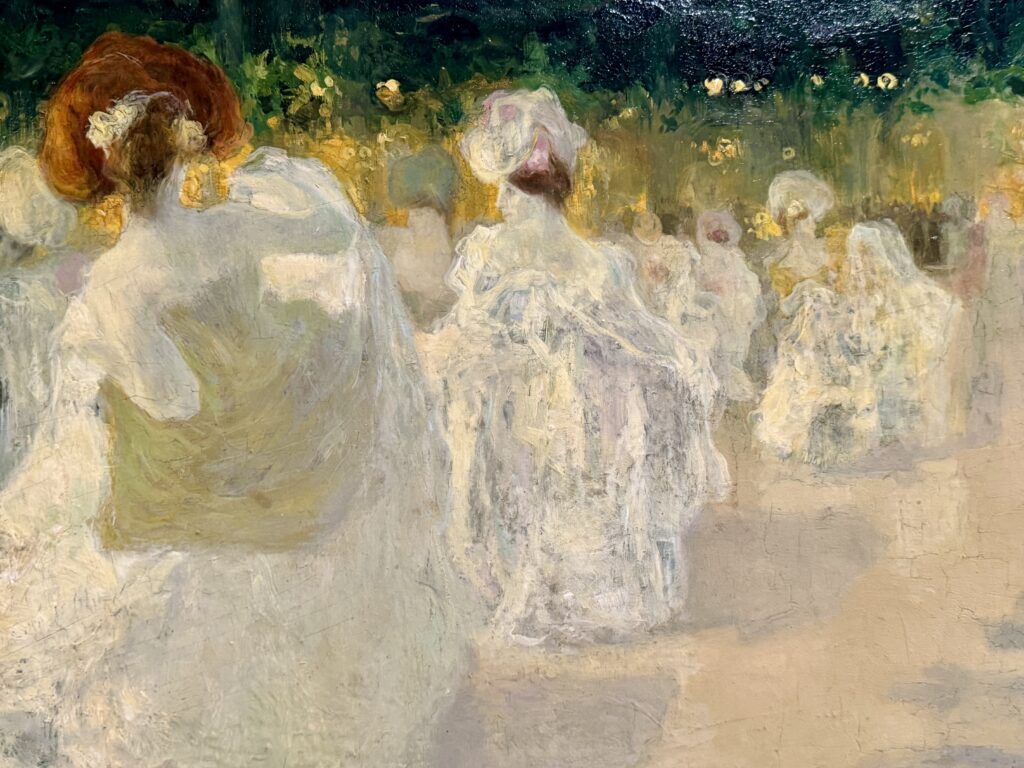
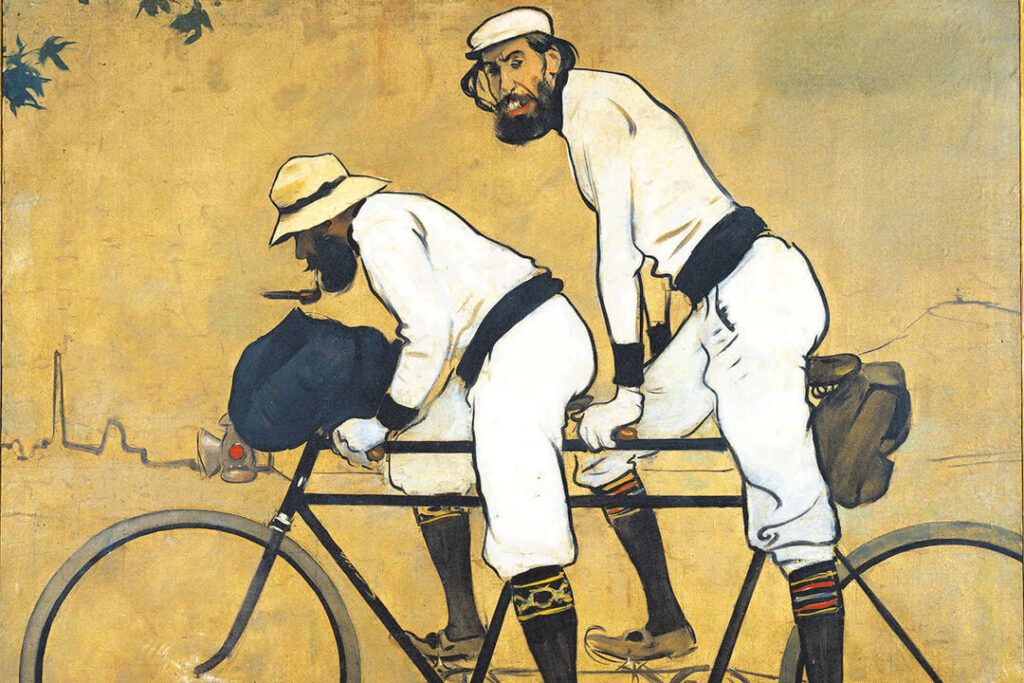
Managed by Pere Romeu, a key figure in Barcelona’s bohemian scene, the tavern was more than just a meeting place.
Romeu was instrumental in promoting magazines and other publications. He brought together art enthusiasts and creators of various ages, notably the young Picasso.
Inspired by the lively venues in Montmartre, Els Quatre Gats hosted exhibitions, concerts, and puppet shows. This period coincided with the birth of cinema, a field in which Barcelona would soon excel as a major production center.
In the modern section part 2, you’ll find some Modernist style period furniture Impressionism, and landscapes. The furniture includes pieces designed for Casa Batllo and Casa Lleo I Morera, including works by Antoni Gaudi.
Of the final rooms, the most interesting is the one dedicated to the bronzes of Pau Gargallo.
Rooftop Terrace
The rooftop terrace offers smashing views across the city.
It’s free with your museum ticket. Otherwise, you can pay 2 euros.
To reach the terrace from the main entrance, pass the WCs on the left and show your ticket.
You ride an elevator most of the way, with a few flights of stairs up to the terrace.
To take the elevator the whole way, head to the far right corner of the oval room. You can also just hike up, which is what I did.
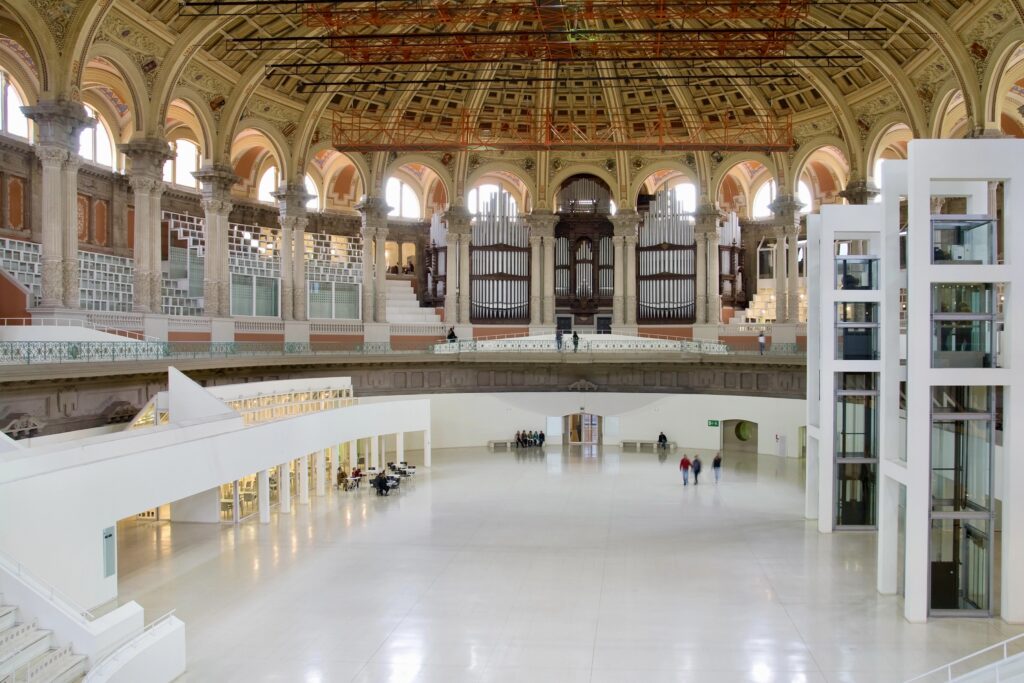
Oval Room
The Oval Room spans an impressive 25,000 square feet and was initially designed for significant gatherings. This included the grand opening of the 1929 Exhibition and various historical concerts and balls.
The room can hold 1,400 people, with an extra 500 seats available in the side stands.
On the first floor, the grandstand boasts arches decorated with fifty coats of arms, representing different Spanish provinces. Near the organ, six additional coats of arms feature musical instruments.
As one of Europe’s largest civilian-use rooms and the museum’s biggest public space, the Oval Room is highly versatile. It hosts everything from local to international events.
The room also contains the museum’s gift shop and cafe. One wall of the room is equipped with touch-screens that guide you through the main art museums in Catalonia.
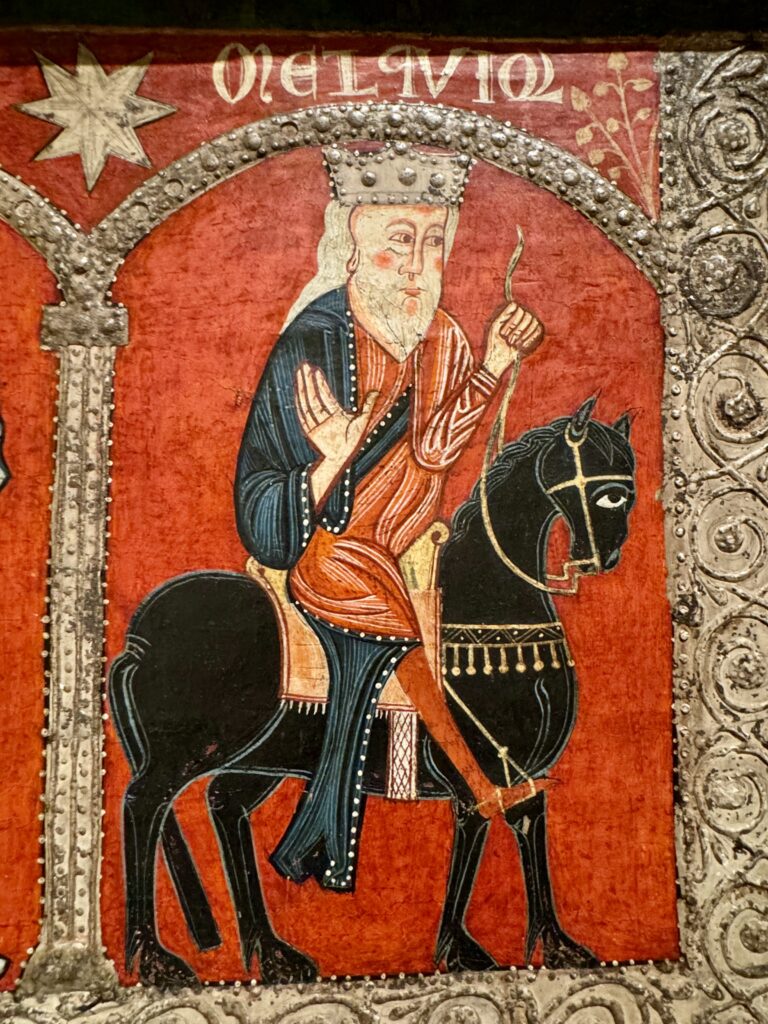
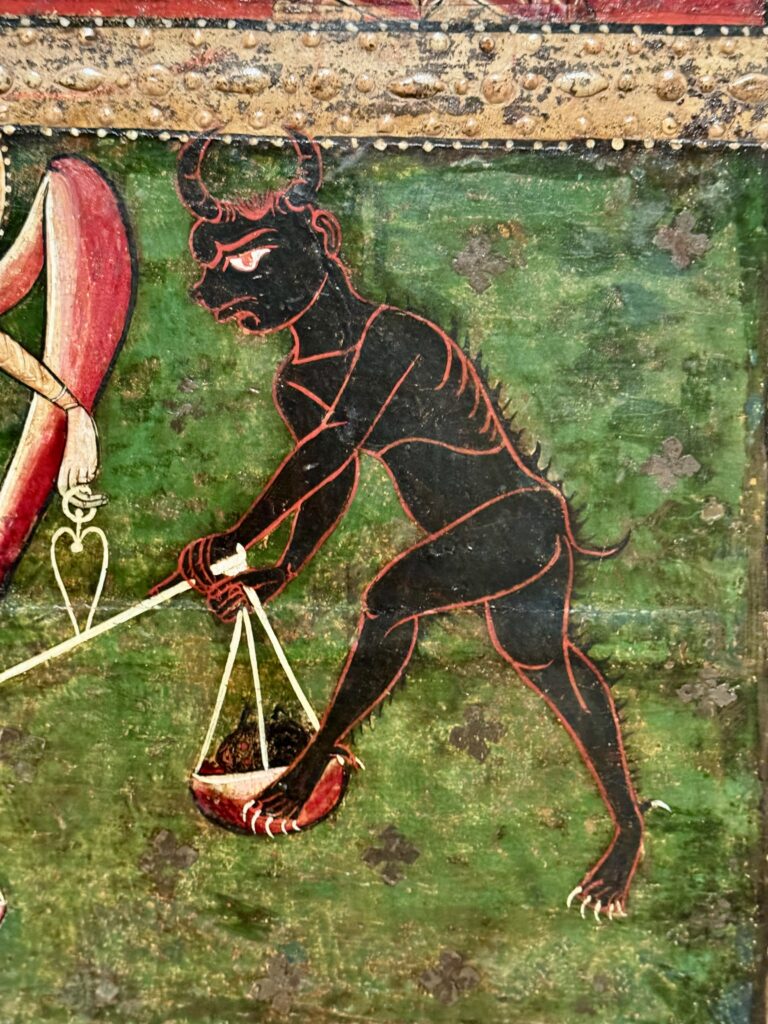
Practical Guide & Tips For Visiting MNAC
How To Get There:
To reach the MNAC comfortably, you can use the Montjuïc Cable Car (Telefèric de Montjuïc) which offers a scenic route over the hill. Or you can take public buses that stop near the museum (lines 150 and 55).
Another convenient option is to use the escalators that start near the metro station at Plaça Espanya (Lines 1 and 3), which take you almost directly to the museum.
Hours: Open Tuesday to Saturday from 10:00 am to 6:00 pm & Sunday from 10:00 am to 3:00 pm. In summer, the museum is open until 8:00 pm Tuesday to Saturday.
Tickets: € 12. If you’re visiting between April and September, you may want to pre-book a skip the line ticket.
Admission is also induced in the Barcelona Articket (covering 6 museums) and the Barcelona Card.
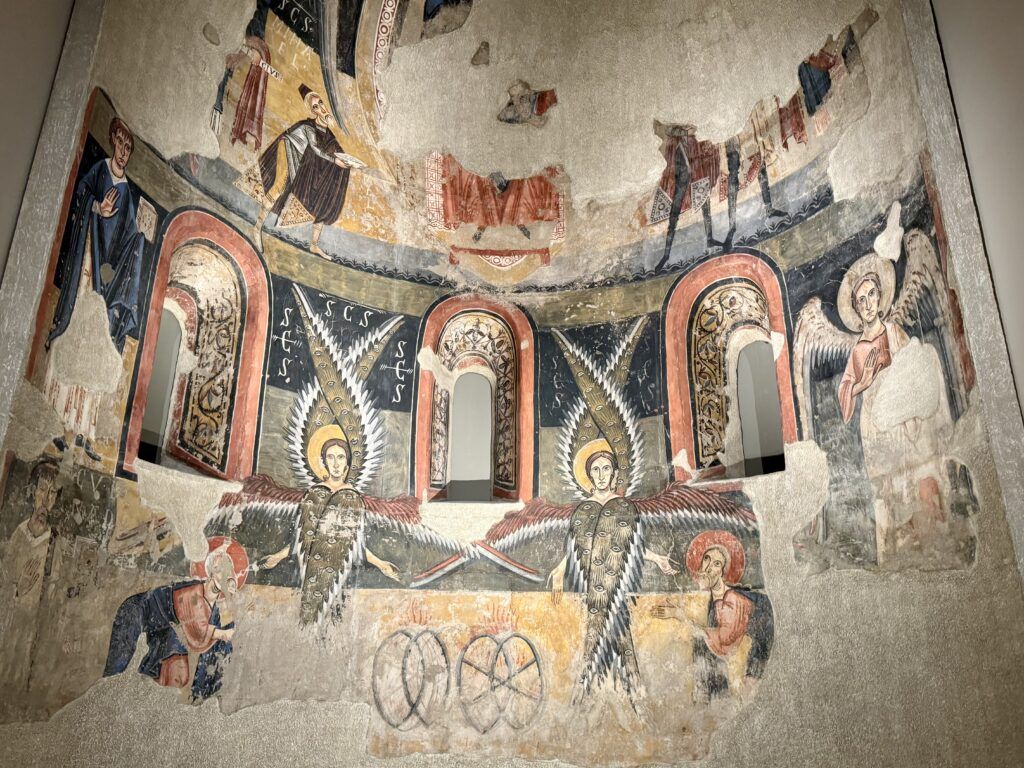
The museum is free to visit on Saturday beginning at 3:00 pm and on the first Sunday of each month from 10:00 am to 3:00 pm.
Pro Tips:
Unfortunately, there are precious few signs in English. But you can scan a QR code to download English explanations or get the audio guide. You may also want to book a guided tour.
I found it difficult to find the restrooms. For a museum of that size, you’d think they’d be everywhere. I finally found one in the Oval Room.
You’ll have to check any large handbags or backpacks for one euro in the cloak room.
While you’re on Montjuic Hill, you may want to visit the Joan Miró Foundation, for a real dose of modern art.
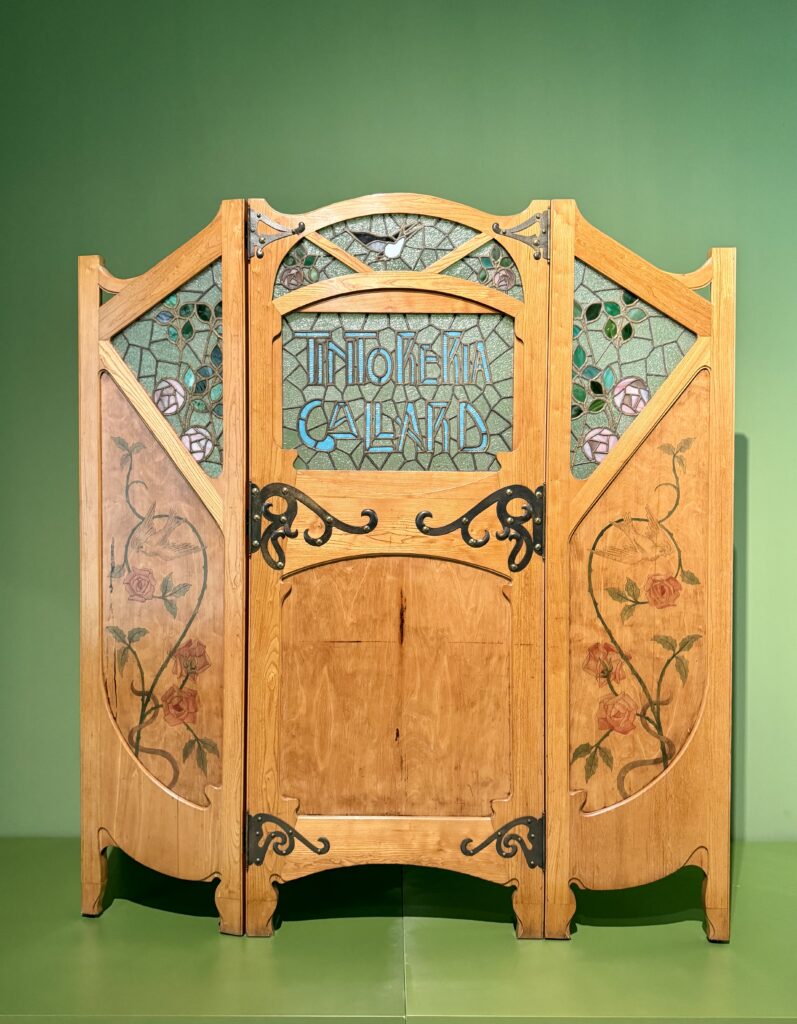
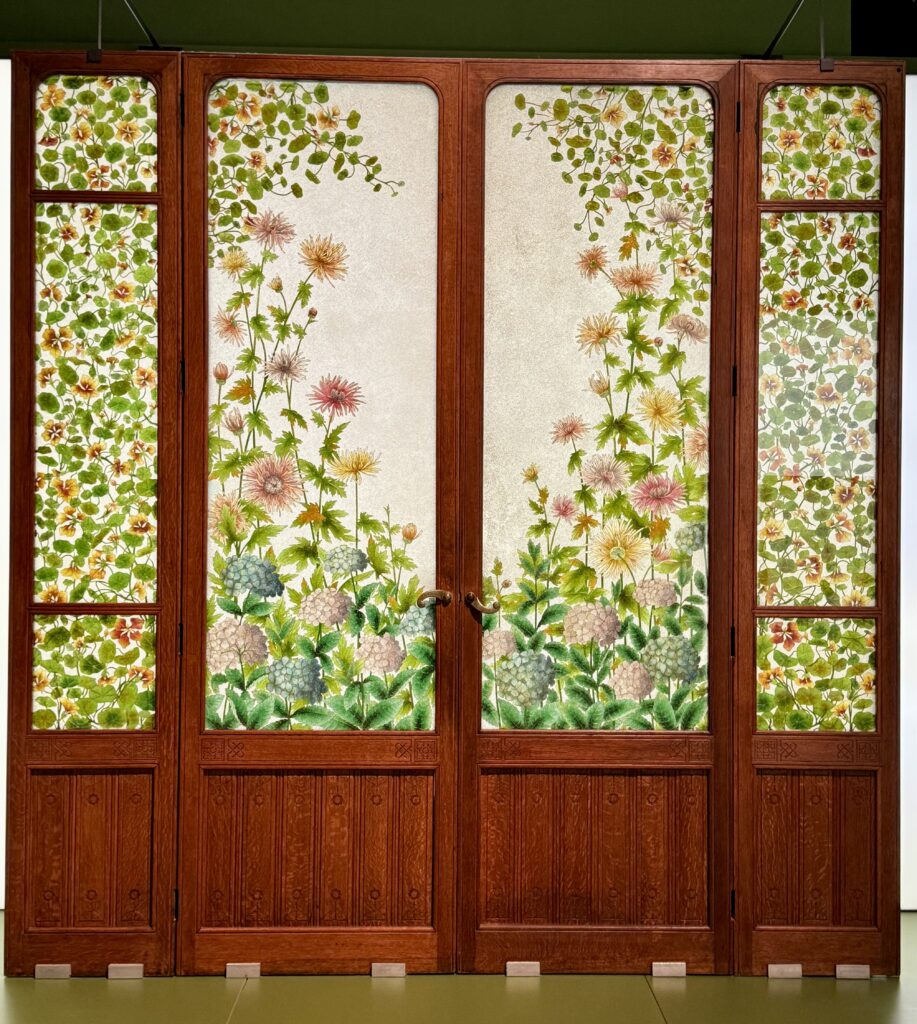
How Long To Spend
The MNAC is a massive museum, one of the largest in Spain. You could spend the whole day there, with a break at the restaurant.
If you wish to see every section and head up to the roof terrace, I would budget 3 hours.
I hope you’ve enjoyed my guide to the National Museum of Catalan Art. You may find these other Barcelona travel guides useful:
- 1 day in Barcelona itinerary
- 3 days in Barcelona itinerary
- what to do in the Gothic Quarter
- hidden gems in Barcelona
- landmarks in Barcelona
- guide to Sagrada Familia
- guide to Casa Batllo
- guide to La Pedrera
- guide to Palau Güell
- guide to architecture in Eixample
Pin it for later.

